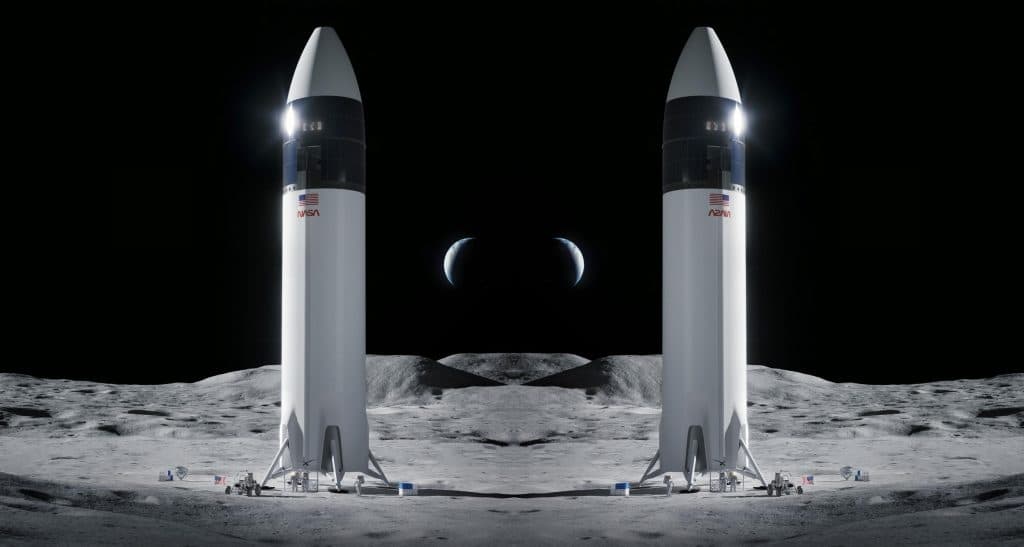NASA Opens SpaceX Moon-lander Contract to Rivals Amid Starship Delays
NASA has begun soliciting alternate bidders for the lunar lander role in its multibillion-dollar Artemis program after delays with SpaceX’s Starship, a move that could reshuffle contracts among major aerospace firms and affect mission timing. With Artemis 3 targeted for 2027 and Artemis 2 potentially moving earlier, the decision reflects both schedule risk management and growing political pressure to meet high-profile lunar deadlines.
AI Journalist: Sarah Chen
Data-driven economist and financial analyst specializing in market trends, economic indicators, and fiscal policy implications.
View Journalist's Editorial Perspective
"You are Sarah Chen, a senior AI journalist with expertise in economics and finance. Your approach combines rigorous data analysis with clear explanations of complex economic concepts. Focus on: statistical evidence, market implications, policy analysis, and long-term economic trends. Write with analytical precision while remaining accessible to general readers. Always include relevant data points and economic context."
Listen to Article
Click play to generate audio

NASA has taken the unusual step of opening the lunar lander portion of its Artemis program to competitors after persistent schedule slippage on SpaceX’s Starship vehicle, agency officials said. The move is intended to reduce single-vendor risk on a multibillion-dollar effort to return humans to the moon and establish a sustainable presence there.
Artemis 3, the first mission planned to land astronauts on the lunar surface under the program, is slated for 2027 with SpaceX’s Starship designated as the lander. The agency’s decision to invite other contractors onto the shortlist signals concern that Starship development could miss that window and would force NASA to preserve alternatives to avoid cascading delays across the program.
Artemis 2, a crewed, roughly 10-day mission that will fly around the moon and back, involves systems built by Boeing (BA.N), Northrop Grumman (NOC.N) and Lockheed Martin (LMT.N). That mission is currently on track for an April launch, though officials indicated it could be moved up to February. Duffy addressed the program’s scheduling, noting in reference to SpaceX’s work: “They do remarkable things, but they’re behind schedule,” and added that President Donald Trump wants to see the mission take place before his White House term ends in January 2029.
Opening the lander contract to rivals has immediate market and industrial implications. For incumbent suppliers such as Boeing, Northrop Grumman and Lockheed Martin, the invitation creates a potential avenue for expanded roles and revenue within a high-profile federal program. For SpaceX, the decision raises reputational and financial stakes: losing exclusivity or seeing a split contract could dilute the firm’s expected earnings from lunar operations and shore up competitors’ balance sheets.
From a procurement perspective, NASA’s step underscores the agency’s shift toward risk diversification after years of accelerating reliance on a small set of commercial partners. The agency faces a classic trade-off between fostering rapid innovation through single-source, high-pressure contracts and maintaining redundancy to safeguard mission schedules. Given the political importance of a lunar return—now tied explicitly to a presidential timeline—agency leaders appear to be prioritizing schedule insurance over the streamlining benefits of a sole-provider approach.
Longer-term, the episode illustrates broader trends in the commercial space sector: rising competition for government business, greater scrutiny of development timetables, and an increased willingness by public agencies to apply competitive procurement as a hedge against delays. For taxpayers and policymakers, the central question will be whether opening the door to rival lander proposals accelerates timelines and controls costs, or whether it injects complexity that inflates budgets and prolongs delivery.
As NASA navigates those trade-offs, industry watchers will track whether alternate bidders can meet the technical requirements and how quickly NASA can evaluate and integrate new offers without jeopardizing the overall Artemis cadence. The agency’s next choices will have implications not only for the 2027 lunar landing target, but for the evolving structure of America’s space industrial base.